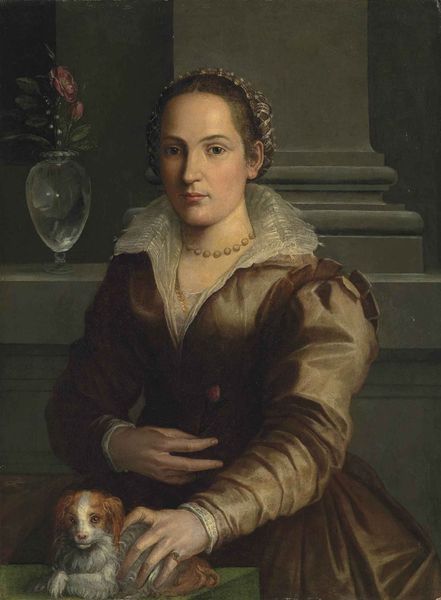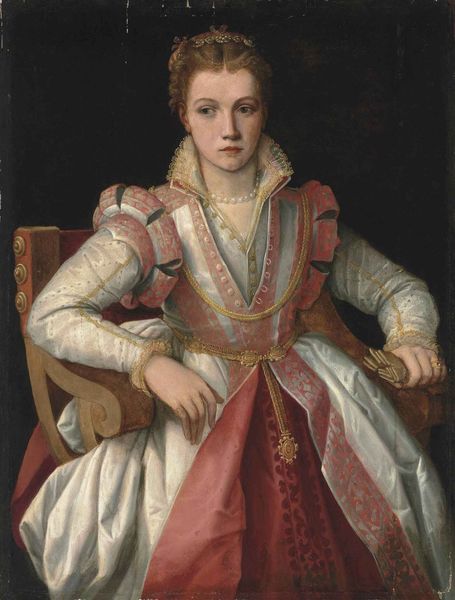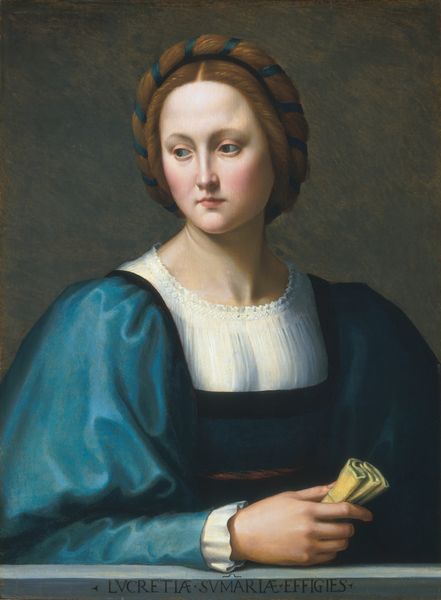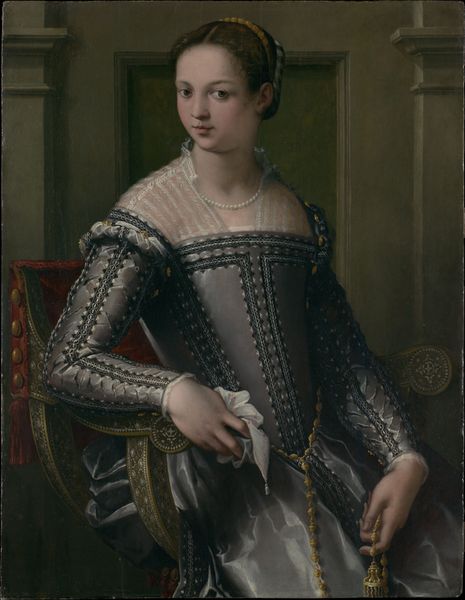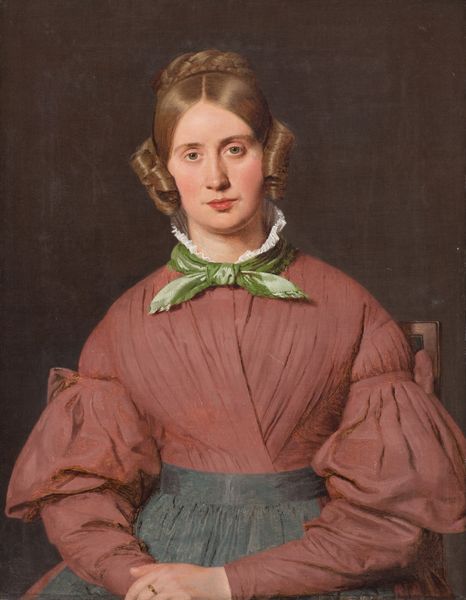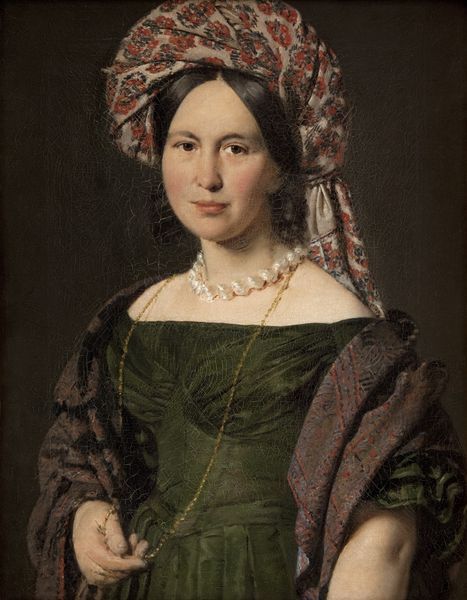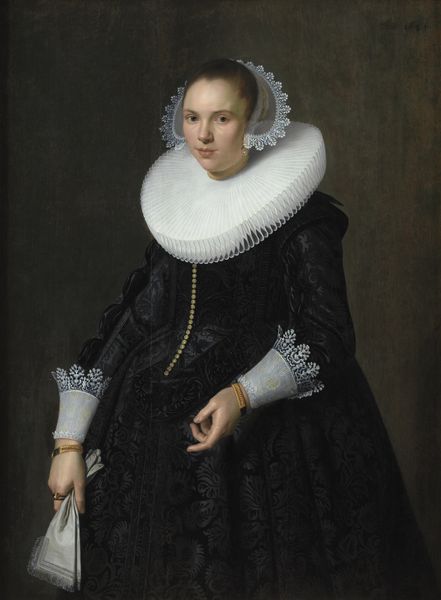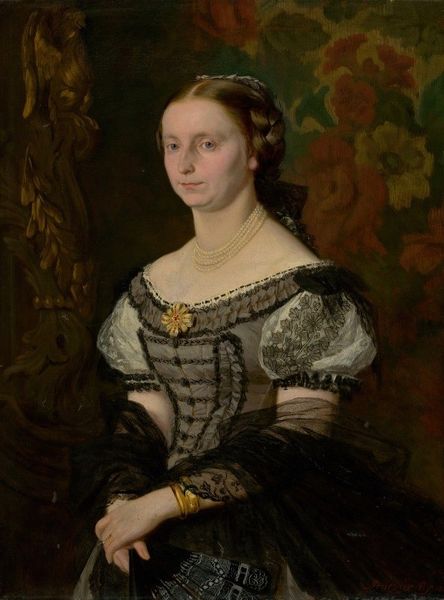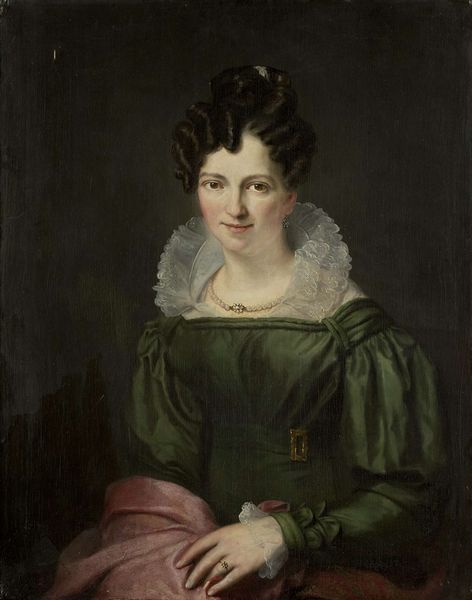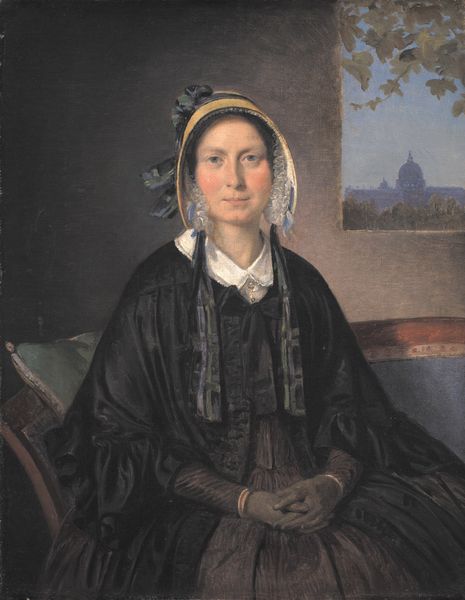
painting, oil-paint
#
portrait
#
painting
#
oil-paint
#
mannerism
#
geometric
#
italian-renaissance
Dimensions: height 114 cm, width 82 cm, depth 15 cm
Copyright: Rijks Museum: Open Domain
Editor: So here we have "Portrait of a Woman," an oil painting by Carlo Portelli, created sometime between 1550 and 1565. She seems almost...resigned, doesn't she? The muted greens and browns give it this serious, almost melancholic feel. What catches your eye when you look at this piece? Curator: It's interesting you pick up on that somber note. For me, it's the tension between the formality of the portrait and the almost unsettling gaze of the subject. You know, portraits from this era, steeped in Mannerism, are always trying to tell us something about status, about intellect... but what is *she* telling us? Look at how her fingers fidget with that little book; a symbol of her literacy perhaps, but also of a quiet, personal space within the public performance of being painted. Don’t you think? Editor: Definitely. That little book adds a layer. So it’s not *just* a symbol, but this little window into her internal life. Curator: Precisely. And that's what makes it sing, right? We, centuries later, are drawn into the quiet drama of her presence. And look how deliberately Portelli rendered the texture of her velvet gown, compared to the plainness of her face. What does *that* say about her identity? Editor: It's like the clothing almost overwhelms *her*. Like her identity is being swallowed by status. Curator: Yes! Maybe...maybe the quiet resistance in her gaze, that melancholy you noticed, is a subtle act of rebellion against those constraints? That maybe, the artist subtly understood. I'm now looking at it anew. Thanks. Editor: I hadn't thought of it like that, but I completely agree! The painting definitely seems more rebellious now.
Comments
No comments
Be the first to comment and join the conversation on the ultimate creative platform.
